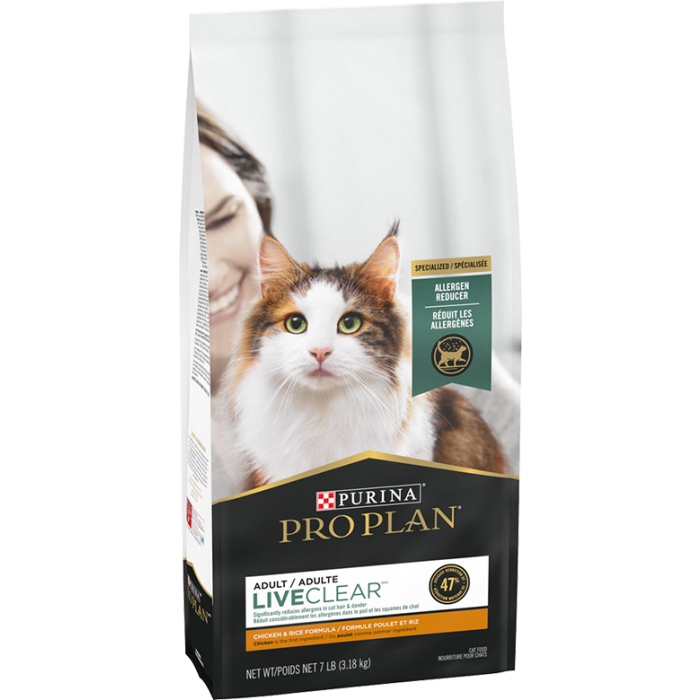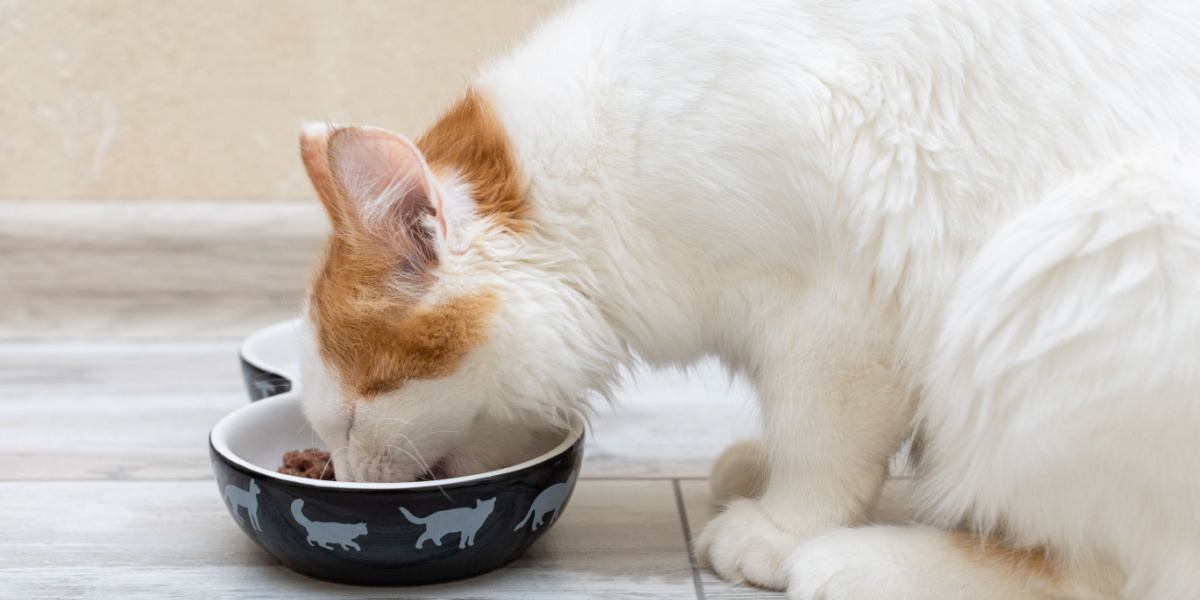Feed your Himalayan cat a balanced diet composed of high-quality, protein-rich cat food. Ensure proper hydration by providing constant access to fresh water.
Choosing the right diet for your Himalayan cat is paramount for maintaining its luxurious coat and overall health. These cats typically thrive on a diet that is high in animal-based proteins since they are obligate carnivores. Your feeding plan should include either specially formulated dry kibble or can wet food that meets the nutritional demands of this breed.
Depending on the cat’s age, activity level, and health status, the quantity and frequency of meals may vary. It’s important to tailor the diet to support a healthy weight, as Himalayan cats can be prone to obesity. Regular veterinary check-ups can help determine the specific nutritional needs of your feline friend. Remember to maintain a clean water bowl at all times, as hydration is critical for preventing kidney and urinary tract issues that can plague this breed.

Credit: www.proplanvetdirect.com
The Himalayan Cat Profile
Himalayan cats, often known as “Himmies”, blend the luxurious coat of a Persian with the striking points of a Siamese. Understanding what to feed these beauties starts with knowing their unique characteristics and behaviors. This guide highlights their physical traits and behavioral tendencies, providing a complete profile of this charming breed. Silkiness and charm define their presence, as does their endearing nature.
Physical Characteristics
- Flat, ‘pancake-like’ face structure
- Large, round blue eyes
- Long, luxurious fur that comes in various colors
- Stocky body with a stout build
- Medium to large size, with males being larger
Stunning blue eyes and long, flowing fur are signatures of the Himalayan. They require regular grooming to prevent matting and maintain their beautiful coats. It is vital for their diet to support a healthy, shiny fur.
Behavioral Traits
| Trait | Description |
|---|---|
| Calm and serene | Enjoy a peaceful environment and are not overly hyperactive. |
| Affectionate companions | Create strong bonds and enjoy being close to their human families. |
| Playful in spurts | Exhibit bursts of playful energy; entertaining to watch. |
| Intelligent | Quick learners who respond well to positive reinforcement. |
While they cherish engagement and playtime, Himalayans are not excessively active. They thrive on interaction but also value their quiet time. Balanced meals can help maintain their temperate energy levels.
Nutritional Needs Of Himalayan Cats
Understanding the nutritional needs of Himalayan cats is crucial for their well-being. These fluffy companions require a diet tailored to their specific needs. Balancing their meals ensures they maintain their gorgeous coat and overall health.
Protein Requirements
High-quality protein is vital for your Himalayan cat’s diet. Muscles, skin, and fur benefit from this essential nutrient.
- Meat: Prime protein source for muscle and hair health
- Fish: Offers omega fatty acids for a shiny coat
- Eggs: Provide easily digestible protein
Essential Vitamins And Minerals
Himalayan cats need an array of vitamins and minerals for optimal health. These elements support their immune system and prevent diseases.
| Vitamin/Mineral | Benefits | Sources |
|---|---|---|
| Calcium | Strengthens bones | Dairy, fish, supplements |
| Vitamin A | Enhances vision and skin health | Liver, fish oils, green veggies |
| Taurine | Supports heart and eye health | Meat, heart, supplements |
Dry Vs. Wet Food: What’s Best For Your Himalayan?
Choosing the right food for your Himalayan cat can be perplexing. You’re faced with a choice: dry food or wet food? It’s crucial to consider the nutritional needs of your feline friend to make an informed decision. Below, explore the various benefits and drawbacks of each type to determine what’s best for your Himalayan.
Pros And Cons Of Dry Food
Dry food, known as kibble, is a popular choice among Himalayan cat owners. Let’s dive into its advantages and limitations.
- Pros:
| Convenience: | Easy to store and serve. |
| Dental Health: | Can reduce tartar buildup. |
| Cost-Effective: | Generally less expensive. |
| Longevity: | Longer shelf life once opened. |
- Cons:
- Lack of moisture for hydration.
- High in carbohydrates, which can lead to weight gain.
- Some formulas may contain fillers or less meat content.
Pros And Cons Of Wet Food
Wet food supports hydration and often contains higher meat content. Let’s look at the pros and cons in detail.
- Pros:
| Hydration: | Helps keep your cat hydrated. |
| Rich in Protein: | Often has more meat than dry food. |
| Palatability: | Many cats prefer the taste and texture. |
| Variety: | Comes in different flavors and textures. |
- Cons:
- Can be more expensive than dry food.
- Must be refrigerated after opening.
- Has a shorter shelf life once opened.
Combining Wet And Dry Food
Many cat owners choose a mixed feeding approach. This combines the benefits of both wet and dry food. Here’s how it works in practice:
- Morning: Serve a portion of wet food to boost hydration.
- Evening: Provide dry kibble which helps clean teeth.
This method ensures your Himalayan gets variety and balance in their diet. The mix also allows you to control portions and manage your cat’s weight effectively. Remember to consult with a vet to tailor the diet to your cat’s specific needs.
Raw And Homemade Diets: Yay Or Nay?
Choosing the right diet for a Himalayan cat can be a puzzle. Pet owners often wonder about raw and homemade foods. These diets might seem natural and healthy, but do they fit feline needs? Let’s unpack the pros and cons.
Benefits Of A Raw Diet
Raw diets can mirror what cats eat in the wild. Many believe this helps keep pets healthy and agile. Below are key advantages to consider:
- Improved coat health: A glossy and full coat can reflect a cat’s good nutrition.
- Better dental hygiene: Chewing raw meat can help reduce tartar and freshen breath.
- More natural behavior: Cats may enjoy the act of tearing into raw meat.
Risks Associated With Homemade Meals
Not all homemade meals are safe for cats. Owners must be aware of these risks:
- Nutritional imbalances: Homemade food may lack essential nutrients.
- Health hazards: Raw meat can carry harmful bacteria like salmonella.
- Picky eating habits: Himalayan cats might reject commercial food after getting homemade meals.
Guidelines For Preparing Balanced Homemade Food
Preparation is crucial for a cat’s health. Here are simple steps for balanced meals:
- Choose the right ingredients: Mix proteins, fats, and carbs wisely.
- Measure supplements: Ensure proper vitamins and minerals are included.
- Consult a vet: A professional can help tailor the diet to your cat’s needs.
Foods To Avoid For Himalayan Cats
Caring for your Himalayan cat means knowing what not to feed them. Many common foods can be harmful or even toxic to your feline friend. It’s important to be aware of these dangers to keep your cat healthy and happy. Below, learn about foods that should never be on your Himalayan cat’s menu.
Toxic Foods
Toxic foods can lead to serious health issues. Here’s a quick reference to help keep your cat safe:
- Chocolate – Contains theobromine, which is deadly for cats
- Alcohol – Even small amounts can cause severe health problems
- Caffeine – Can lead to rapid breathing, heart palpitations, and muscle tremors
- Grapes and Raisins – Can cause kidney failure in some cats
- Onions and Garlic – Can break down a cat’s red blood cells, leading to anemia
- Xylitol – A sweetener in many products; causes sudden insulin release which can lead to hypoglycemia
Common Allergens
Himalayan cats can have allergic reactions to certain foods:
- Beef, Fish, and Dairy Products – Common allergens for cats
- Artificial Colors and Flavors – These additives can cause allergic reactions
Unhealthy Snacks And Treats
Some snacks and treats may not be toxic but are not advisable for your cat’s diet:
- Dog Food – Lacks essential nutrients that cats need
- Human Snacks – High in calories and lacks proper nutrition for cats
- Raw Meat, Eggs, and Fish – Pose a risk of foodborne illnesses
- Milk and Dairy – Many cats are lactose intolerant and can develop digestive issues
Feeding Schedule And Portion Sizes
Taco Cat—the regal Himalayan needs a well-planned diet. Feeding schedules and portion sizes keep them healthy. Let’s find the perfect meal plan for these fluffy friends.
Determining Adequate Portion Sizes
Knowing how much to feed your Himalayan is crucial. A vet’s advice shapes these decisions. Factors like age, weight, and activity level play a part.
| Age | Weight/Size | Activity Level | Portion Size |
|---|---|---|---|
| Kittens | Small | High | ¼ – ⅓ cup |
| Adults | Medium | Moderate | ⅓ – ½ cup |
| Seniors | Varies | Low | ¼ – ⅓ cup |
Creating A Consistent Feeding Routine
Routines keep cats happy and healthy. Feed your Himalayan twice a day. Morning and evening meals work best.
- Choose times that fit your schedule—consistency is key.
- Stick to the same meal times each day.
- Leave water out always.
Maintaining A Healthy Weight
Keeping a Himalayan cat fit touches on love and health. Just like us, cats need balance in their diet. A well-fed Himalayan can enjoy a long, comfy life. We’ll peek at how you can monitor their weight and adjust their diet. You’ll learn to keep your fluffy buddy in tip-top shape.
Monitoring Weight And Body Condition
Check your cat’s shape. A regular weigh-in tells you a lot. It lets you spot any weight gain early. Use pet scales or a home scale. Pet them as you do it to keep them calm. Look for a small waist and feel for ribs under their fluff.
- Weekly weight checks keep you informed.
- A slight waist dip after their ribs is healthy.
- You should feel the ribs, but they shouldn’t be visible.
Adjusting Diet For Overweight Cats
Is your Himalayan chubby? Time to rethink their food. Too much weight can be bad for them. Get vet advice before you make changes. They might need fewer snacks or lower-calorie meals.
| Current Diet | Adjustments |
|---|---|
| Regular meals | Smaller portions |
| Free-feeding | Scheduled meals |
| Treats | Limit or switch to low-calorie options |
Change their diet slowly. Mix new food with the old. Gradually increase the new while decreasing the old. Always have fresh water available. With these steps, your Himalayan cat will stay healthy and happy.

Credit: www.catster.com

Credit: cats.com
Frequently Asked Questions Of What To Feed Himalayan Cat
How Much Do Himalayan Cats Eat?
Himalayan cats typically require 1/4 to 1/2 cup of dry cat food daily, split between two meals. Adjust quantities based on activity level and weight. Always ensure fresh water is available.
Can Himalayan Cats Drink Milk?
Himalayan cats, like other felines, may be lactose intolerant. While some can digest milk, others may experience digestive issues. It’s best to offer lactose-free alternatives or water.
How Do You Take Care Of A Himalayan Cat’s Fur?
Brush your Himalayan cat’s fur daily using a wide-toothed comb. Tackle tangles gently, and never pull forcefully. Ensure regular baths with feline-friendly shampoo to maintain coat health. Trim the fur around the paws to prevent litter from sticking. Avoid matting by keeping the fur dry and clean.
What Do Himalayan Cats Love?
Himalayan cats love interactive play, cozy snuggles, and high perches for observing their surroundings. They also enjoy regular grooming sessions.
Conclusion
Selecting the optimal nourishment for your Himalayan cat doesn’t need to be daunting. Embrace high-quality, balanced diets that cater to their specific needs. Remember, fresh water and occasional treats will keep your furry friend purring contentedly. Tailoring their diet ensures a healthy, happy life for your Himalayan companion.
Choose wisely and watch them thrive.



